.jpg)
|
|---|
.jpg)
|
|---|
David Ellis was baptized the 6th of October 18292
This may seem like a mundane beginning to this story, however, it will prove to be one of the more interesting tidbits of facts discovered. David’s parents were Evan and Hannah Ellis. The family abode was named Bongam. Dwellings didn’t have numbers; they were given names. Somehow, this lends an air of intimacy, as if the dwelling was a family member. Bongam means bandy-legged or bow-legged in Welsh. One can have fun imagining all the scenarios where the name might have come from. In letters from David’s sister Ellen, the address is given as Bongam Bach.3
Bach can be either a noun meaning - hook, hinge, nook, corner, bend or an adjective meaning small or dear. Hannah would live at this residence for over 50 years.
Evan was listed as a mariner. It is doubtful that he was the first mariner in the Ellis line as that was the primary occupation in this part of Wales. He certainly was not the last. Each of the next three generations produced at least one sailor.
David’s parents, Evan Ellis and Hannah Davies, were married at the parish church in Mwnt, Cardigan, Wales on the 6th of March 1824.4
Hannah was born in Mwnt, which the English spell Mount. It is a small village along the Cardigan Bay between Cardigan and Aberporth. On 26 September 1824 their daughter Mary was baptized there. 5
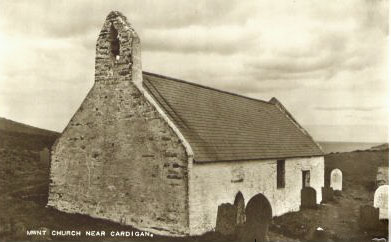
|
|---|
All of which brings us to the identities of David's other siblings.
| Child's Christian Name |
When Baptized | Christian - Surname |
Abode | Quality, Trade or Profession |
|---|---|---|---|---|
| Thomas6 | 30 July 1826 | Evan - - - Thomas Hannah |
Bongam | Mariner |
| James7 | 5 May 1834
James died 3 |
Evan - - - Davies Hannah |
Bongam | Mariner |
| John8 | 3 October 1837 | Evan - - - Owens Hannah |
Bongam | Master Mariner |
There was a daughter named Ellen or Elinor, whose baptism record has not been found. However, she was listed in subsequent census records and letters from her to David’s children signed Ellen Ellis still exist. In one letter she states “You can guess my age as I was next to your dear father.”9
In the 1841 census she was listed as being 9.10
She was probably born in 1831 or 1832.
Although the baptism records indicate different surnames, I feel comfortable listing them as children of Evan and Hannah Ellis. The 1841 census shows Mary, Elinor and John as living with Hannah. They all have the last name of Ellis.11
David is living nearby, working as a servant. His age was listed as 10, which means he was born in 1830. Ages, as listed in census records, are to be taken as approximate ages. This would be the first of many questions as to the year of David’s birth. There are letters from Ellen in which she speaks about Mary, Thomas and John. Thomas will also appear shortly in our chronicle.
In 1833, Aberporth was described as
“ABERPORTH (ABER-PORTH), a parish in the lower division of the hundred of TROEDYRAUR, county of CARDIGAN, SOUTH WALES, 5 1/2 miles (N. E.) from Cardigan, containing 485 inhabitants. This parish is pleasantly situated on the shore of Cardigan bay, St. George's channel, and in a small cove near the mouth of the river Howny, forming a commodious, though small port, which is a creek to the port of Cardigan."12
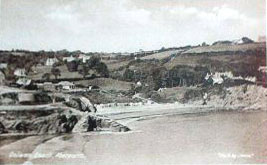
|
|---|
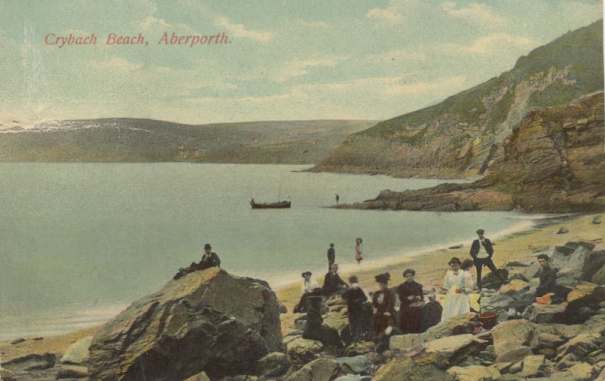 Aberporth doesn’t actually have a port. Because of the gentle shelving in the beach, the ships would come in on the low tide, the crew would call out to the local porters who would come quickly and help to unload. Then the ship would sail out on the high tide.
Aberporth doesn’t actually have a port. Because of the gentle shelving in the beach, the ships would come in on the low tide, the crew would call out to the local porters who would come quickly and help to unload. Then the ship would sail out on the high tide.
There seems to be some discrepancy concerning the extent of education. An extract from
The Reports of the Commissioners appointed to enquire into the state of Education in Wales
1847 reads:
“ABERPORTH
On December 21st I visited the above place, with the intention of examining the school there. . . . They read to me the 4th chapter of Isaiah, which they all, except one, did in a most unintelligible manner; false pronunciations were constantly made in almost every verse. . . . I gave them some words to spell, and asked them the meaning of some of them, in which they got on very badly; e.g. apparel, reproach, comely, believe, grief, judgment, assemblies, they could neither spell, nor give the meaning of.”13
Despite this observation, Hannah, David and Ellen exhibit fine penmanship and spelling in the extant examples in the author’s possession. They demonstrate a thorough grasp of the English language, grammar and syntax in use at that time.
Reading Ellen's letters, one can visualize Bongam and the small village
of Aberporth.
May 14, 1897
I have finished the garden, the apple trees are full of blooms and the gooseberries bushes full of fruit, the weather is very cold at present hope to have warm weather soon.”14
"16 Oct 1901
I live in out of a way place only in the summer the place is full of visitors from London and parts of England.” 15
“Aberporth is very lovely at present in the summer months. It is very lively lots of English people are visiting the place in the summer from London & elsewhere. It is a very healthy place. I live in a cottage about 5 minutes walk to the village.”16
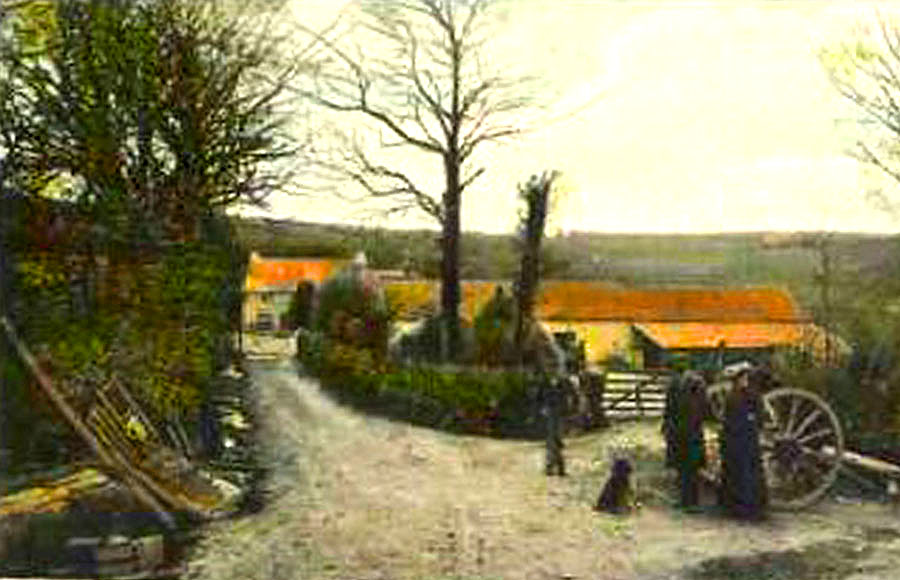
|
|---|
“The image of ‘the jolly sailor conforming to a stereotype that the bulk of society expected of him’ was not always true of the mariners of Southern Ceredigion. Many of them were deeply religious men and bible classes, hymn singing practices and prayer meetings were held on board locally manned ships the world over.” 17
“Capt. Stanley Owen of Penbryn (1821 – 1897) during his seafaring career held a Sunday School on board his ships every Sunday and since the crews were largely Welsh, he gave them prizes at the end of each voyage for learning hymns and verses. I saw one of his account books and I was very surprised by the number of chapters and hymns that were learnt by the sailors.” 18
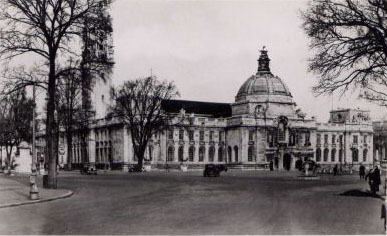
|
|---|
Thomas Ellis received his ticket in Liverpool on 6th February 1845. It shows that he was born in Aberporth in 1826. He first went to sea in 1840, which explains why he wasn’t listed in the 1841 census. He was 5” 9” tall, brown hair and eyes, ruddy complexion and had a cut on his forehead.
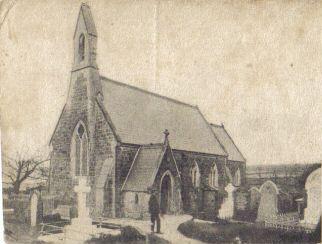
|
|---|
“David Owen Ellis, eldest son of Captain Thomas Ellis late of Tymawr, by Mary his wife, d.25 Mar 1862 (2 yr 5 mth) Hannah Ellis o'r Bongam, m. 27 Tach 1887 (85)"20
From this, I conclude that the Thomas Thomas listed as Evan and Hannah’s first son was this same Thomas Ellis. His son and his mother share a monumental inscription in the Aberporth parish church. We also see the name Owen used again.
In 1846 David was a seaman on a Cardiff registered coaster during the first six months of the year. During 1847 he sailed on a Newport registered vessel from the same port, on or about 16th August bound for overseas, returning to London around 2nd December. He then shipped on the same vessel, sailing from Newport just after Christmas returning to Cork, Ireland around 30th May 1848.21 At that point he seems to disappear from the British registry system.